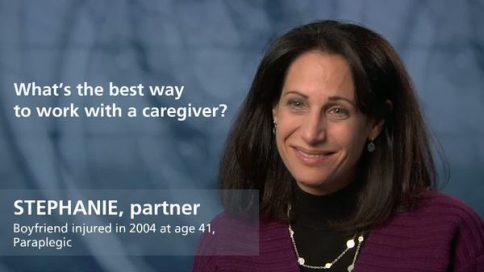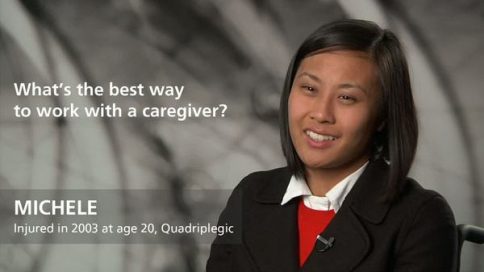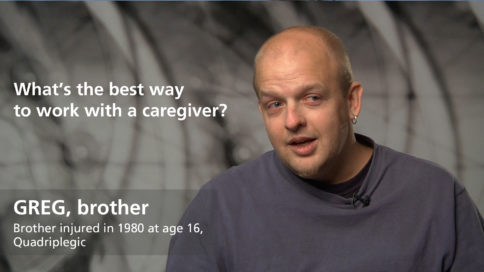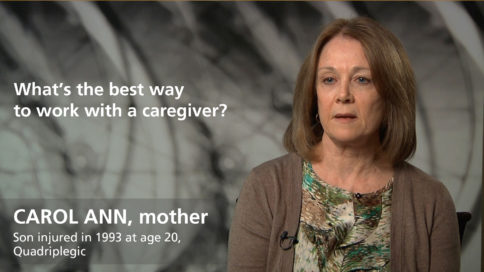What’s the role of a caregiver after a spinal cord injury? - Patti Rogers, SW
|
|
What’s the role of a caregiver after a spinal cord injury? |
|
Patti Rogers, SWSocial Worker/Executive Director, Arkansas Spinal Cord Injury Commission, Little Rock |
||
| Read Bio | More Videos by Patti Rogers | |
|
Share |
||
Transcript
Theoretically you want the caregiver to promote the independence. You don’t want them to wait on the person hand-and-foot and a lot of times, in my thirty years of working with spinal cord injuries, that happens a lot. A caregiver is there for support. A lot of times it requires more support depending on the person’s injury level, how high it is—if they’re a tetraplegic obviously they’re going to need a little more support because there are a lot of things they can’t do by themselves. There’re also a lot of things they can do, and we try to encourage the family members. When our case managers go out and talk to them, we try to encourage them to get the person to do as much as they can for themselves. However, that’s not always the case. A lot of times we notice that husbands and wives, if they don’t have that great a relationship before the person sustained their injury, it gets worse after that. A lot of times they either can’t deal with it and they’re like, “I’m out of here.” Or you have a family member who thinks that it’s just so much easier for them to take care of everything instead of waiting for the person to try to put on their pants by themselves, or try to do their other ADL’s. And to me, that’s the part right there where they destroy the person’s independence and a lot of times that person gets used to it and is like, “I don’t have to do anything myself, they’ll take care of me.”
Show Less|
|
||
add
What’s the role of a caregiver after a spinal cord injury? |
||
Patti Rogers, SWSocial Worker/Executive Director, Arkansas Spinal Cord Injury Commission, Little Rock |
More Videos by Patti Rogers | |
| Transcriptadd | share | |
Theoretically you want the caregiver to promote the independence. You don’t want them to wait on the person hand-and-foot and a lot of times, in my thirty years of working with spinal cord injuries, that happens a lot. A caregiver is there for support. A lot of times it requires more support depending on the person’s injury level, how high it is—if they’re a tetraplegic obviously they’re going to need a little more support because there are a lot of things they can’t do by themselves. There’re also a lot of things they can do, and we try to encourage the family members. When our case managers go out and talk to them, we try to encourage them to get the person to do as much as they can for themselves. However, that’s not always the case. A lot of times we notice that husbands and wives, if they don’t have that great a relationship before the person sustained their injury, it gets worse after that. A lot of times they either can’t deal with it and they’re like, “I’m out of here.” Or you have a family member who thinks that it’s just so much easier for them to take care of everything instead of waiting for the person to try to put on their pants by themselves, or try to do their other ADL’s. And to me, that’s the part right there where they destroy the person’s independence and a lot of times that person gets used to it and is like, “I don’t have to do anything myself, they’ll take care of me.”
















